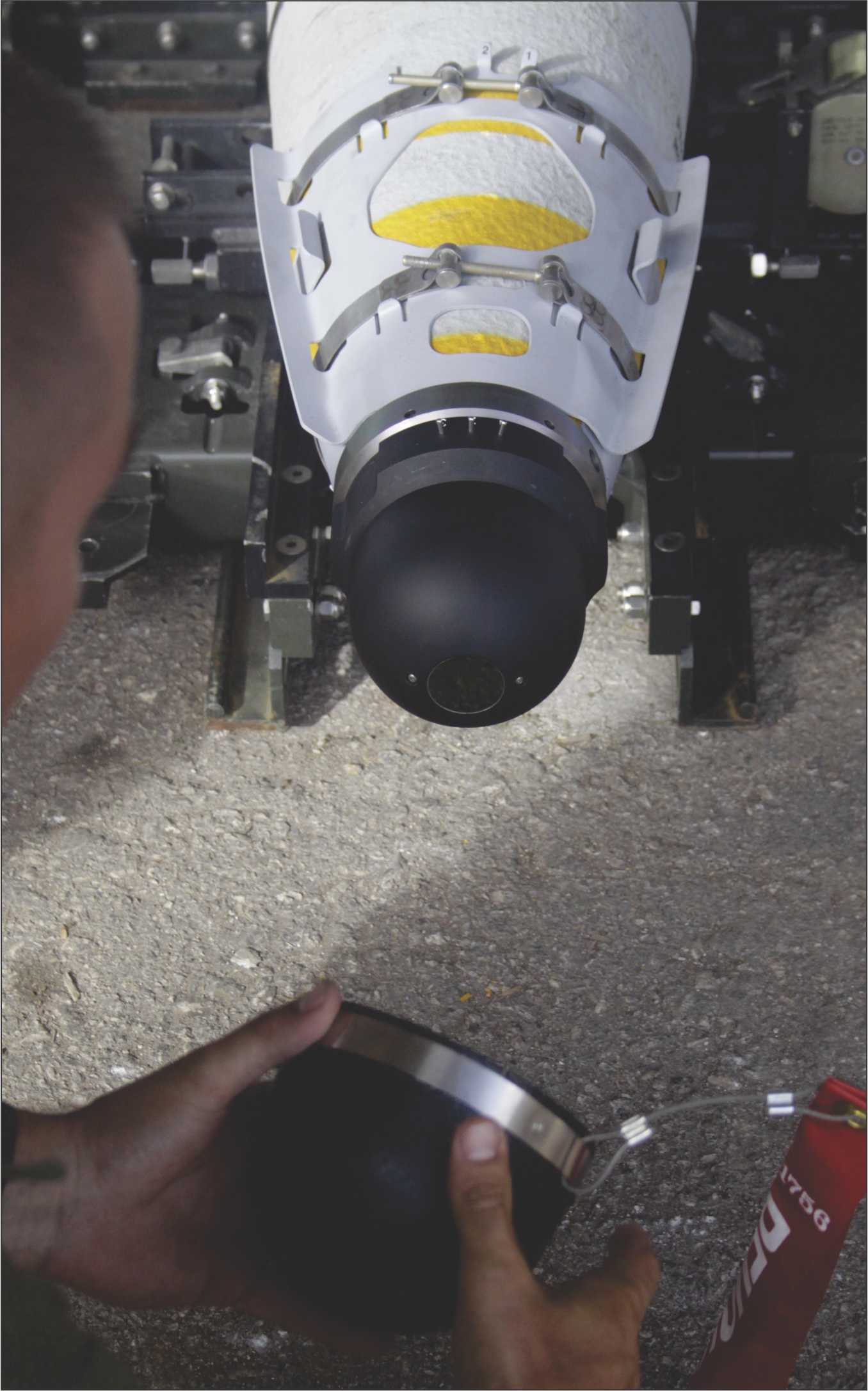Precision guided munitions and tactical battlefield
With the introduction of revolution in military affairs, militaries around the world are gearing up for a new generation weapon profile that can enhance their strike capability while minimizing collateral damage that can result in a crisis.
Today, precision-guided munitions (PGMs) with their high degree of discrimination and accuracy again hold such promise. In modern warfare, both in terms of methods employed and of the greater concern placed is on limiting human suffering during conflict.
Technology has always been part of warfare, but it has not resulted uniformly in diminishing the frequency of conflict or the amount of human suffering in war.
Over the 1970s and 1980s, PGMs became deeply integrated into US plans to fight the Soviet Union. They played a small role in the 1989 invasion of Panama, and a much larger role in the 1991 US-led war against Iraq.
In the first Iraq War, the United States used PGMs against Iraqi tactical, operational and strategic targets, severely targeting Iraqi forces without fully destroying either Iraqi command and control or the willingness of elite Iraqi forces to fight.
PGMs made the war quicker, easier, and probably less painful for the US military, but beyond this did not transform the final outcome.
Arguably, the existence of PGMs made possible the 1999 Kosovo War, where the United States and its NATO allies used precision airpower to push Serbia out of Kosovo.
Had the United States not had weapons available that could strike at Serbian military, economic and political power without causing enormous civilian casualties, it is unlikely that NATO would have intervened.
Even the relatively modest Serbian civilian casualties tested the commitment of many NATO partners. However, US allies have demonstrated great reluctance in developing the full systems necessary to generate their own strike complexes, instead relying on US capabilities.
This is not to say that France, the United Kingdom, Italy, Canada and a few others cannot fulfill the demands of multilateral operations, or even of certain small-scale operations of their own.
Kosovo was surely important, but it was in the Wars on Terror that PGMs began to have a major systemic effect.
In brief, PGMs made the Afghan Model possible. They allowed the United States and its allies to defeat governments and quasigovernmental organizations through a combination of special forces, precision airpower and local proxies.
Having won the first round of the Afghan War through such methods in 2001, the United States replayed the campaign in Libya in 2011, and seeks to replay it one more time against ISIS.
PGMs have also enabled the long-running drone campaigns that the United States has conducted in Somalia, Yemen and Pakistan, making the wars relatively bloodless from the US point of view.
Advocates insist that they have also made the wars less costly for the target populations, although the campaigns might not have happened at all in the absence of precision weaponry.
The Second Iraq War was more of a conventional conflict, undertaken for reasons that now appear absurd, but are more connected with America’s hegemonic moment than with the opportunity granted by a particular system of weapons.
PGMs affected the operational and tactical conduct of the early stages of the war, as well as the counterinsurgency campaigns that ensued in both Iraq and Afghanistan, but did not fundamentally change the nature of the conflict, or the reasons for fighting it.
Tactical weapon
Unlike ICBMs, PGM have recently played an important role in all major wars. These smart weapons represent a technological revolution – we can no longer ignore how they can restructure the nature of war.
PGM are tactical weapons which are not just shot at a target – they are guided to it. They operate in all environments air-to-air, surface-to-surface, air-to-surface, and surface-to-air.
This expanding class of bombs and missiles dramatically improves the probability of hitting-and what is more important, eliminating targets over increasingly longer ranges.
PGM seek out their targets rather than follow a ballistic trajectory subject to the laws of physics. Consequently, their accuracy is not as limited by range, as is true for prior conventional weapons.
The sinking of HMS Sheffield by a single Argentine radar-guided Exocet dramatized the impact PGM can have on modern warfare.
Yet PGM can be effective in many wartime situations. For example, a ship is patrolling still waters, apparently safe from enemy fire hundreds of miles away.
Emerging from a little dot over the horizon, a radar-guided missile rips into the ship’s hull, turning it moments later onto an inferno of flotsam.
Meanwhile, a tank crew is busily firing shells at advancing enemy troops, unable to respond in time to a laser-homing anti-tank missile, about to imbed its shaped-charged warhead deep into the tanks 10-inch thick armour.
A heat-seeking anti-aircraft missile elsewhere hurtles harmlessly past a fighter at 2000mph, fooled by a decoy plume of exhaust gases released by the pilot’s defensive countermeasure equipment.
Yet guided weapons are not new. In World War Two, the homing submarine torpedo was developed.
The Germans utilized radio-guided glide bombs in Italy and fired their V.1 ‘buzz’ bombs and V.2 rockets on London and Antwerp, the Japanese flew kamikazes and rocket-powered manned Baka.
PGM is now being developed or deployed in large numbers by the US. Like, TOW is an optically tracked, wire-guided anti-tank missile, using a hollow charge, with a range about 3 kilometres (surface-to-surface) while Phoenix is a long-range missile used by Navy tactical aircraft, with guidance by either an active or a semi-active radar homing device (air-to-air).
Similarly, Maverick is a missile guided by television, but more recent Maverick models have been refined with laser and infrared homing (air-to-surface), so as Harpoon is an anti-shipping missile with a range exceeding 90kilometres and guided by a preprogrammed altitude reference with an active radar seeker (surface-to surface).
The Stinger is a shoulder-fired anti-aircraft missile with a range of up to 5kilometres which uses proportional navigation and infrared homing for guidance (surface-to-air).
Guided weapons are designed for use against targets whose locations can be determined accurately.
Locating target
Before a designated target can be located and destroyed, it first must be detected. Yet improvements in target acquisition do not come easily.
Inadequate visibility caused by poor weather or enemy countermeasures compromises the sophisticated equipment’s reliability.
Since the operation of many PGM is predicated on whether the target is visible to an observer, their effectiveness will be impaired as long as they are unable to function in all weather conditions, at night, through smoke or through heavy dust.
Moreover, depending on the topography of the battlefield, terrain features such as trees and ravines wreak havoc on guidance systems.
They provide camouflage, reduce contrast needed for electro-optical guidance and are considerably more reflective than military targets for laser beams.
Despite, or perhaps because of, the proliferation of nuclear weaponry, conventional weapons technology has experienced a quantum leap forward in sophistication.
Innovations have been especially prominent in sensors for detecting and locating the enemy under all visibility conditions and effective munitions which depend on seekers to lock on and home in on targets.
In addition to enhanced detection and guidance systems, recent weapon refinements include improved missile and warhead design, vertical launch capabilities and superior counter-countermeasures to protect the PGM themselves from the enemy’s defensive countermeasures.
Millimetre radar can be applied in guidance for beam-riding missiles, target designation and even space while operating in wavelengths no greater than10 millimetre.
The radar has better resolution, is more effective in the smoke, fog or clouds which often plague battle areas, and provides better focused beams to thwart jamming than does other radar.
Cheaper, lighter and smaller infrared imaging devices, such as pyroelectric imagers, which filter out the ground’s natural background of heat to lock onto moving land targets, will improve night-time operation.
Research and development programmers should not only concentrate on reducing costs and refining PGM guidance for all-weather performance, but also on making existing PGM systems more automatic.
Major strides in these areas will result in a much greater presence of smart weapons in combat arsenals world wide.
To the extent PGM will supplement rather than substitute for individual weapons systems, tactical doctrines will take longer to catch up with the technology, so the full military benefit of guided weapons may be forfeited for some time.
Also, the target acquisition research process may lag behind PGM development and deployment.
Basic to the advent of guided weapons were powered flight in developing missiles, and electromagnetic command links for correcting guidance errors after launch.
A host of unpredictable forces can affect a missile during flight, including deviations in wind and air pressure, varying power plant performance control system malfunctions, and enemy countermeasures.
Unlike other projectiles constrained to unalterable flight paths, PGM can continually modify theirs. The first step to improve missile accuracy generally was to install inertial guidance systems in strategic missiles, like ICBMs, to direct them along predetermined trajectories towards stationary targets.
The internal system also was more immune than external control contains within all necessary information and will not be deceived during the flight. A self-contained guided missile is expensive, however, and only effective for stationary targets.
The focus of PGM research has been to improve precision of weapons accuracies by guiding the munitions to their targets – stationary or moving.
Improving accuracy
Accordingly, internal missile brainwork or homing system, has refined guidance. On-board automatic homing devices function in one or more electromagnetic spectral regions where microwaves (radar), infrared waves, or electro-optical waves (laser beams or television-tracking) are propagated through space.
The different homing system in this final stage of the flight path enables a projectile to self-regulate its flight path. Instead of always heading directly toward the target, newer PGM can anticipate a moving target.
The weapons have either an active, semi-active or passive homing device to lock in on a target, ensuring that the missile’s warhead will detonate at the target’s predicted position or at least within its lethal envelope.
In passive homing, a seeker utilizes electromagnetic radiations naturally characteristic of the target; heat waves, light waves and sound waves.
Active guidance homes on signals of the target which were originally sent by, and then reflected back to a sensor contained within the weapon (or by an external source, thus semi-active).
For both homing techniques a seeker processes the electromagnetic signals emanating from a target to generate automatic corrections to the missile’s flight controls.
For example, a modern Maverick has its target illuminated with a coded laser beam, and then a laser-seeking device in the projectile’s guidance system locks onto the laser beam reflected from the target.
The Walleye air-launched glide bomb also provides a stand-off capability for aircraft, but it uses television cameras; an image of the target filmed by the camera is displayed on a monitor screen inside an aircraft so that the observer is able to lock the bomb’s electro optical tracker onto the target.
The homing system in a Soviet SA-7 anti-aircraft missile is infrared-seeking and it is attracted to the hot exhausts from aircraft engines. One of the most common PGM deployed by armed forces world wide is the antitank TOW.
Here, the operator, using his sights, directs the missile to the target via electronic impulses transmitted along a wire connected to the missile.
This homing feature allows PGM to deliver ordinance with extreme accuracy. As a result of this characteristic, PGM system components must be compatible-defence missiles should not home on defense units.
PGM equipped with anti-self homing devices enable the weapons to distinguish between friend and foe. Also, limitations on such sophisticated weaponry (particularly munitions’ accuracy during darkness or inclement weather) are slowly disappearing with improvements in the missile’s electronic brains-its guidance system.
However, an intense enemy countermeasures environment would frustrate the proper functioning of many current detection and guidance systems, which rely upon or radiate electromagnetic energy in their operation.
Electronic countermeasures (ECM) exploit the electromagnetic spectrum to thwart guided weapons. Perhaps the best countermeasure to a guided weapon is another guided weapon.
In their recent invasion of Lebanon, the Israelis sent ahead remotely powered drones as decoys for, and to fix the location of Syrian Soviet-made surface-to-air missiles (SAM), which were so devastating to Israeli aircraft in the early days of the 1973 war.
Countermeasures
Israeli F-16s could then destroy the SAM sites whose locations had been revealed. One popular form of ECM is to dispense from aircraft chaff, or quantities of radar-reflecting material such as tinfoil, to create radar clutter.
Another countermeasure-jamming-can confuse or deny target information to an adversary using radar for target-fixing or guiding weapons. One form of active jamming is to saturate enemy radar frequencies by transmitting continuous noise and thereby degrade the enemy system.
Alternatively, ECM system could generate erroneous information either on the range or bearing of a target by alternating pulses in time or creating powerful mimic pulses for the enemy’s tracking system.
Of course, due to mutual interference, neither side can operate within those frequency bands for target acquisition. A related aspect is that such ECM betray position or indicate to the enemy that he has been detected, and can be traced and destroyed by hostile missiles.
Because guided weapons use homing techniques operating in different regions of the electromagnetic spectrum, not all countermeasures are electronic. Other means can reduce potential targets’ electromagnetic signatures which PGM rely upon for guidance.
Engines, gun muzzles, and exhaust nozzles emit heat which makes them vulnerable to infrared-seeking PGM. Countermeasures include channeling exhaust gases elsewhere or using decoys emanating even greater heat.
To counter optical homing missiles, non-reflective paints offer protection, and organic smoke generators or weather modification techniques, like cloud seeding, can cause atmospheric distortions.
Camouflage remains an effective basic countermeasure against most types of PGM. Countermeasures suggest of course, enemy countermeasures.
Because guided weapons systems are susceptible to detection and can be confused, a tactic is to influence the PGM-armed force’s perceptions of the battle situation.
Electronic countermeasures (ECCM) by a PGM-armed force may thwart these attempts. ECCM protecting guidance systems include signal coding and using random or rapid variations in frequency.
By sending impulses in a designated code, a seeker will follow only the series of signals received with prescribed randomness. If the enemy attempted to jam the targeting missile’s signal with interference, the seeker will search out a clear one.
So there is a trade-off, if a missile follows a prepackaged route and is thus liable to miss if the target has moved, the missile is also more resistant to countermeasures.
Implicit in allowing for corrections to guide the missile is the increased susceptibility, and remedy, to enemy ECM. PGM are rapidly becoming prevalent in warfare, since greater assurance of a direct hit is a marked technical advance over prior weapons.
New sensor, guidance and communications technologies will continue to provide PGM with vastly superior accuracy over longer ranges.
Since the operation of many PGM is predicated on whether the target is visible to an observer, their effectiveness will be impaired as long as they are unable to function in all weather conditions, at night, through smoke or through heavy dust.
Moreover, depending on the topography of the battlefield, terrain features such as trees and ravines wreak havoc on guidance systems.
They provide camouflage, reduce contrast needed forelectro-optical guidance and are considerably more reflective than military targets for laser beams.
Despite, or perhaps because of, the proliferation of nuclear weaponry, conventional weapons technology has experienced a quantum leap forward in sophistication.
Proliferation effect of PGM on local and global conflicts is now the subject of heated discussion among military and political leaders worldwide.
Clearly, the impact PGM can have on small Third World nations contrasts sharply with that for the superpowers.
Deployment
While political pressures would deter supplier nations from encouraging the proliferation of sophisticated weapons to their own detriment, large transfer of relatively unsophisticated, inexpensive PGM should prove, under most circumstances, to be more than sufficient.
British Harrier jets were shot from the skies over the Falklands by weaponry the British had previously sold the Argentines. But a supply nation has little leverage to use arms as an instrument of political control since the recipient country can shop for arms from another exporting nation.
Perhaps the more successful approach to avert potential conflict is timely and effective diplomacy. An increasingly important spillover effect of arms trading is that guerrillas can acquire the leakage.
PGM-armed insurgents carrying out guerrilla strikes against government troops and engaging in urban fighting can readily incorporate PGM into their tactics.
While insurgents do not expose high-value targets, government forces certainly do. In contrast, even if counter-insurgents used PGM, they would still, for the most part, be reduced to time-proven tactics of attrition and weakening the peasant support base. Thus, PGM used by government troops would not noticeably aid them in their mission.
However, the impact of this new class of conventional weapons on potential nuclear war is difficult to assess. PGM offer a non-nuclear war-fighting capability which can lower – or raise-the threshold of nuclear conflict.
PGMs are prescribed for tactical combat and represent a decided advantage for the forces fighting with PGM where neither adversary is equipped with nuclear weapons.
Under the circumstances, it is unlikely that a superpower ally would be included to use nuclear weapons to support one side unless its own immediate strategic interests were seriously threatened.
For adversaries equipped with nuclear weapons, PGM are of some consequence on the risk of nuclear war. On one hand, more accurate tactical weapons would provide an intermediate-level substitute for nuclear weapons and thereby prevent escalation into a nuclear conflict.
This added dimension could end a conflict before either side resorted to nuclear weapons. Many legislators support a build-up of conventional forces as a greater buffer since outnumbered, outgunned American and allied troops currently rely on a nuclear threat to deter enemy acts of aggression.
Civilian populations would further benefit because the nature of PGM is to zero in on other weapons with electromagnetic signatures, these weapons would be used against military rather than civilian, targets.
Of course, the use of smart weapons also could lower the nuclear threshold. If an adversary were predisposed to use nuclear weapons in order to win (or following the loss of) a war, PGM would escalate the war since the main effect of PGM is to alter tactical battle capabilities.
Thus, an adversary could back itself into a wall by taking the defensive posture of imminent use of nuclear weapons should it fact the possibility of defeat.
The other side’s superior fighting capability, resulting from a larger or more sophisticated arsenal of weapons might hasten the decision.
However, since any improvement in military capabilities could precipitate such a posture, attributing the risk specifically to deployment of PGM is misplaced.
Another reason why the nuclear threshold could be lowered is that distinctions between conventional, tactical nuclear and strategic nuclear forces could become increasingly nebulous.
The molecular deployment of troops for tactical use of PGM might be perceived as preparation to wage nuclear war. There would be a strong inclination by an adversary to pre-empt since both fighting capabilities demand similar force structures.
Also, although PGM in some cases might substitute for tactical nuclear systems, many new systems could be modified to deliver nuclear weapons.
To be sure, there could exist a strong tendency to sacrifice the nuclear fire-break to obtain victory. For years the central purpose of a strategic arms arsenal has been to avoid nuclear war, not to fight one and win it.
Nuclear weapons may be important for political purposes, but they are useless for military purposes.
The Reagan Administration contended that the US must have nuclear superiority over the Soviets to be secure. But one need not match the Soviets warhead for warhead as long as existing weapons are adequate to deter a rational first strike.
The military applications of PGM are unlimited – in air, land and sea-they represent the future for weaponry.
In order to exploit the full potential of PGM, however, more resources will need to be diverted from nuclear weapons, to some extent, to tactical weapons production.
The arms race in tactical weapons, unlike nuclear weapons, is unrestrained. The horizon of cost-effective, all-weather, simply operated PGM is not far off.




